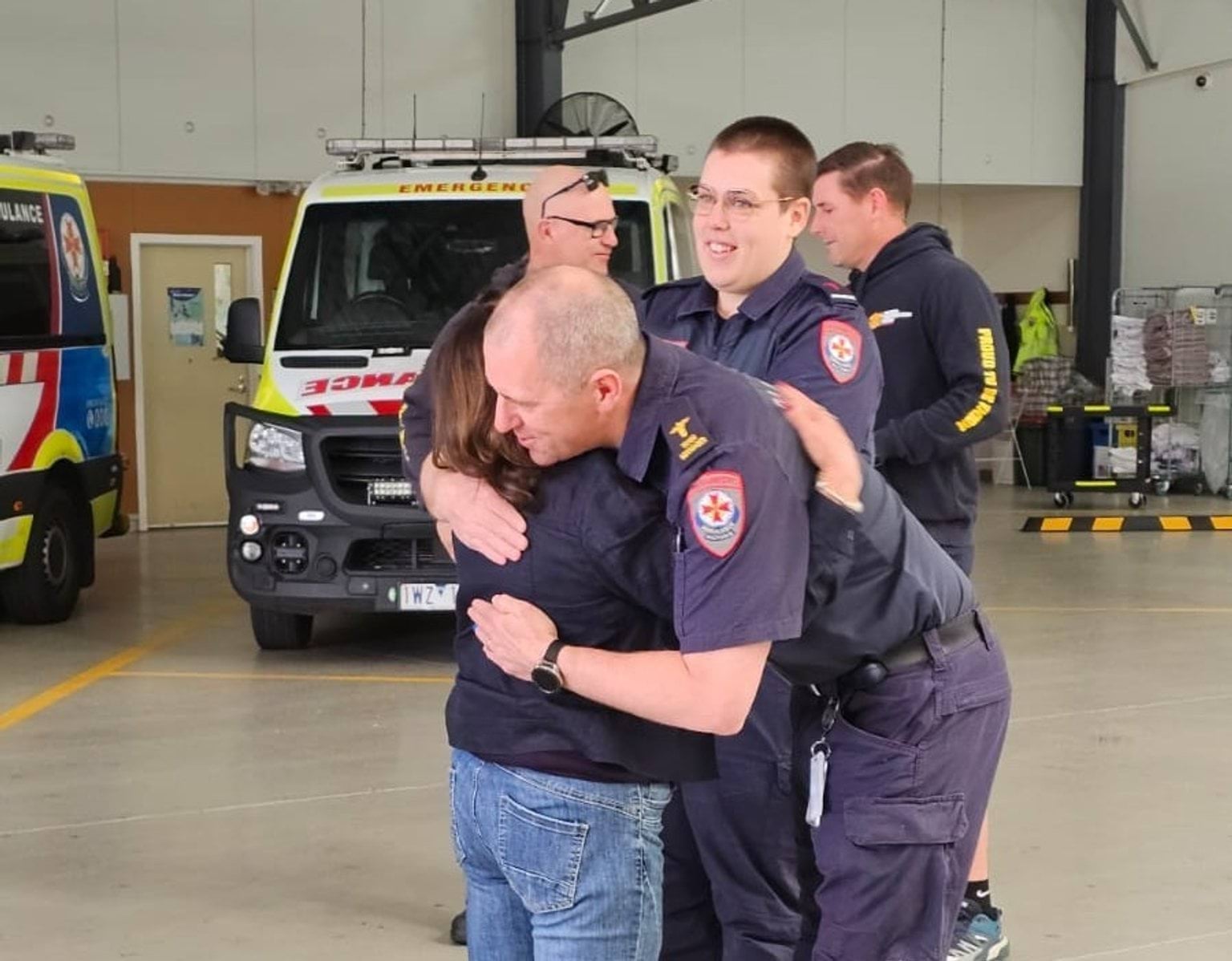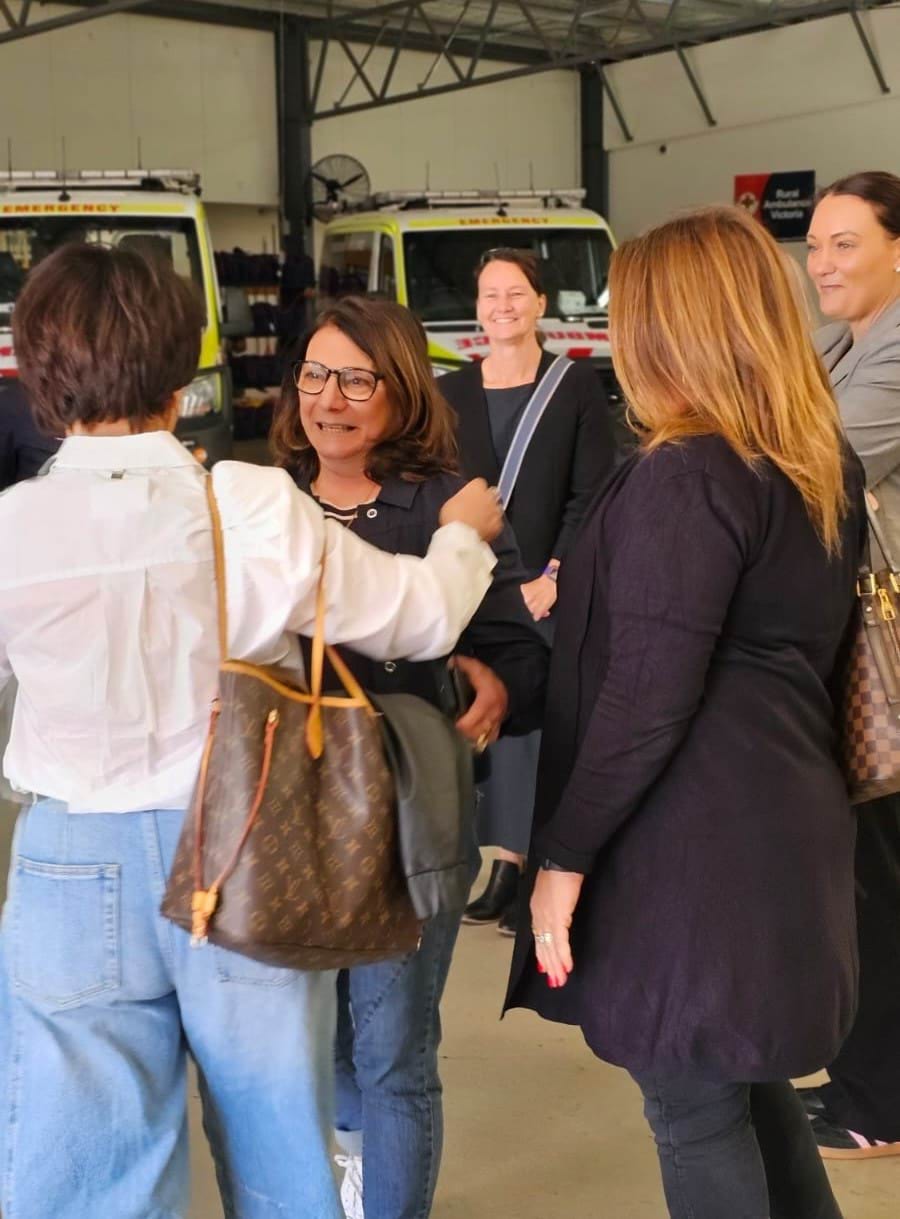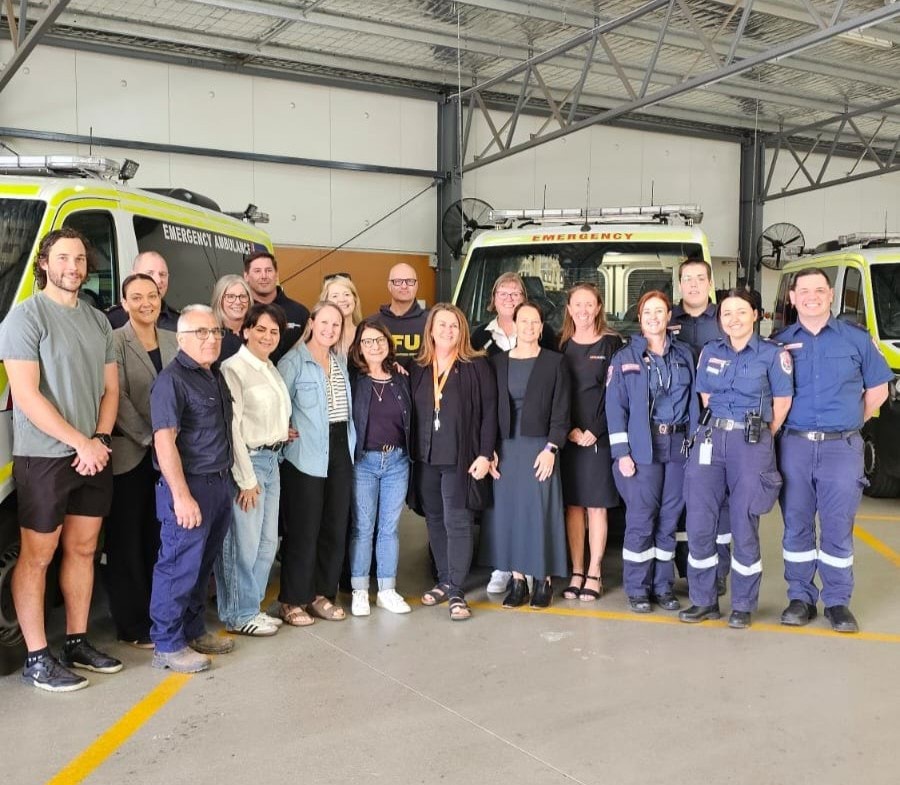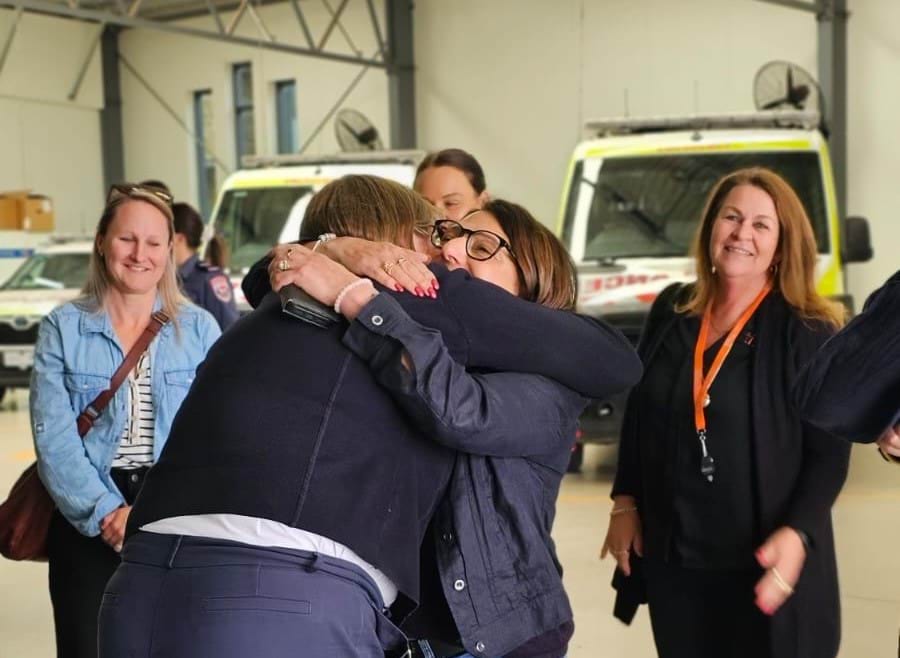- Published:
- Saturday 25 October 2025 at 2:00 pm

Participants in a Mildura pilates class have shown the incredible impact of bystander CPR, helping save the life of a fellow class member who experienced a cardiac arrest.
Fortunata ‘Forch’ Panetta, 65, was at her usual 6:15am reformer class in August when she suddenly collapsed.
“We were about 15 minutes into the class and it had all been normal, then completely out of the blue, she just fell back,” class member Grace Weaving said.
At first, the group thought Forch had fainted but it quickly became apparent that it was a life-threatening emergency.
“Two women in the class immediately began CPR as we realised this was really serious,” Grace said.
“I said I would call the ambulance – I’d never had to call Triple Zero (000) before.
“It was surreal. It’s not something you expect to happen in that environment and to a woman who was so fit and healthy.”
Forch was in cardiac arrest, where the heart stops pumping blood effectively around the body. It can happen to anyone, regardless of age, gender or fitness level, and often without symptoms.
Lisa Nystrom, an off-duty nurse, was in the pilates class and began CPR.
“When I’m at work, I’ve got monitors and a team behind me but on this occasion, I didn’t have any of that and had to just rely on my own instincts and knowledge,” she said.
“It absolutely highlighted the importance of knowing what to do in a cardiac arrest because there were no warning signs this was going to happen.
“It was unlucky it happened to Forch, but so lucky it happened where it did because we were there to help her.”
The members of the class were in the process of applying the pilates studio’s automated external defibrillator (AED) when Ambulance Victoria (AV) crews arrived.
Mobile intensive care ambulance (MICA) paramedic Craig Stack said the efforts of the bystanders made all the difference.
“Their knowing what to do in an emergency and knowing how to do CPR was invaluable to give Forch a chance at survival,” he said.
“For every minute that CPR is delayed during a cardiac arrest, survival decreases by 10 per cent.
“The high-quality compressions meant her heart rate remained in a shockable rhythm, so as soon as we arrived, we applied our defibrillator and delivered three shocks, continuing compressions in between.”
A Fire Rescue Victoria (FRV) crew helped with CPR, responding to the emergency as part of the Emergency Medical Response (EMR) partnership with AV which sees firefighters dispatched to the most critical medical emergencies.
About 10 minutes later, Forch’s pulse returned, however she remained in a critical condition. MICA paramedics performed rapid sequence intubation (RSI), a highly skilled procedure where a patient is placed into medically induced unconsciousness so paramedics can manage their airway.
Forch was transported to Mildura Base Hospital then transferred to The Alfred. After intensive treatment and nearly three weeks in hospital, Forch was finally able to return home – a milestone her rescuers and family say still feels miraculous.
“It was a huge relief when I found out she survived,” Lisa said. “I knew she had been in hospital a while so I was fearing the worst.”
FRV acting commander Matthew Duda said Forch’s case highlights the importance of early and effective CPR.
“If you don't know CPR, learn it now. It's as easy as Call, Push and Shock – and you never know when you may need to help save a life,” he said.
Anyone can help save a life in three simple steps: Call (call Triple Zero 000), Push (perform CPR by pushing hard and fast on the middle of the chest) and Shock (use an AED).
Almost three months later, Forch is recovering and thankful the cardiac arrest occurred at the pilates studio.
“I was in the right place – if it had happened anywhere else, there might not have been anybody to begin CPR and I probably wouldn’t have survived,” she said.
“It happened without any warning at all. I considered myself reasonably fit, which many of the hospital staff indicated helped my survival and recovery.
“I’m slowly getting back into things, getting better and stronger every day.”
Both Forch and her husband Frank said they couldn’t be more grateful to the trainer and members of the class and all the first responders.
“I’m incredibly grateful. I thank God that it happened where it did and that all the emergency services were able to respond so quickly,” Frank said.
Every day, around 21 Victorians will suffer a cardiac arrest and only one in 10 survive.
Victoria has the best cardiac arrest survival rates in Australia and third best anywhere in the world, thanks to a high level of bystander intervention meaning early access to CPR and defibrillation.
Learn more about Call, Push, Shock this Shocktober. Resources are available in multiple languages.
Updated




